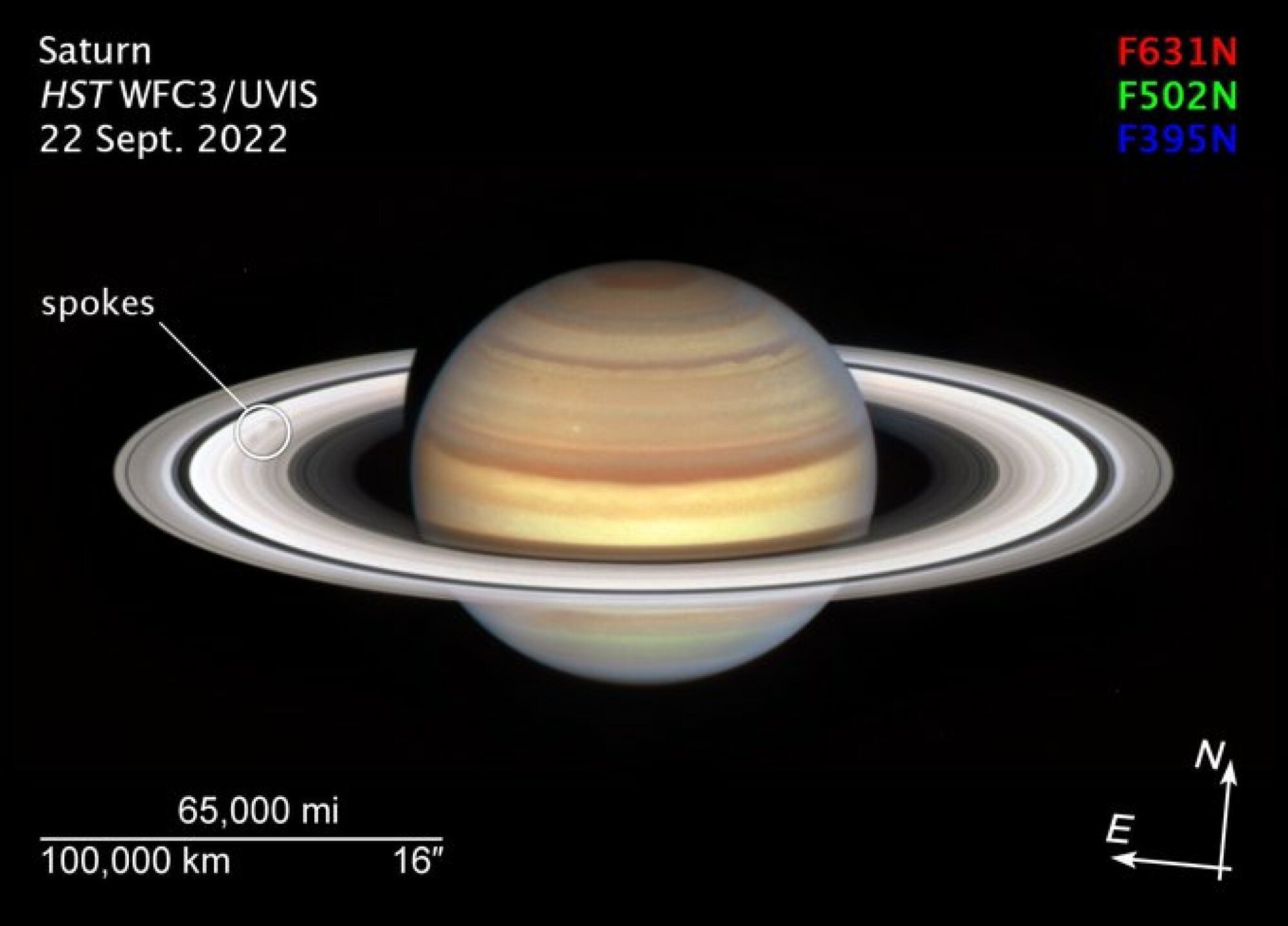
For decades, astronomers have watched ephemeral formations come and go on Saturn’s rings.
Now, for the first time in over a decade, these uncanny splotch-like forms are back. NASA calls them “spokes,” and they’re visible on the left side of the rings in the new Hubble telescope images shown above and below. It’s a unique happening in a rare place in our solar system, as there are few known ringed objects in our cosmic neighborhood.
“It’s a fascinating magic trick of nature we only see on Saturn — for now at least,” NASA planetary scientist Amy Simon said in a statement.

Credit: NASA / Hubble
The spokes disappear during either the gas giant’s winter or summer solstice; like on Earth, that means when sunlight reaches either its furthest or lowest extent. (Summer solstice, for example, is the longest day of the year for this reason.) But the blotches return as the equinox approaches (the point in fall or spring when day and night are about the same length). Seasons on Saturn each last seven years, because the planet is much farther away from the sun. So it takes quite a while for the Saturnian seasons to change.
Yet even with close study of Saturn’s rings by NASA’s legendary Saturn probe, Cassini, planetary scientists don’t fully understand when exactly the patterns return.
“Despite years of excellent observations by the Cassini mission, the precise beginning and duration of the spoke season is still unpredictable, rather like predicting the first storm during hurricane season,” NASA’s Simon explained.
Want more science and tech news delivered straight to your inbox? Sign up for Mashable’s Top Stories newsletter today.
What might trigger this planetary enigma?
Planetary scientists suspect that charged particles traveling from the sun, called the solar wind, hit Saturn’s magnetic field, “creating an electrically charged environment,” NASA said. On Earth, this creates the brilliant northern lights. On Saturn, hundreds of millions of miles away, tiny dust-sized particles in the rings might get charged. This “levitates those particles above the rest of the larger icy particles and boulders in the rings,” the space agency explains, ultimately causing us to see changes in appearance on Saturn’s rings.
Saturn’s autumnal equinox is still over two years away, so expect more views of the curious shifting patterns on this distant world’s rings. Indeed, our solar system is weird.
